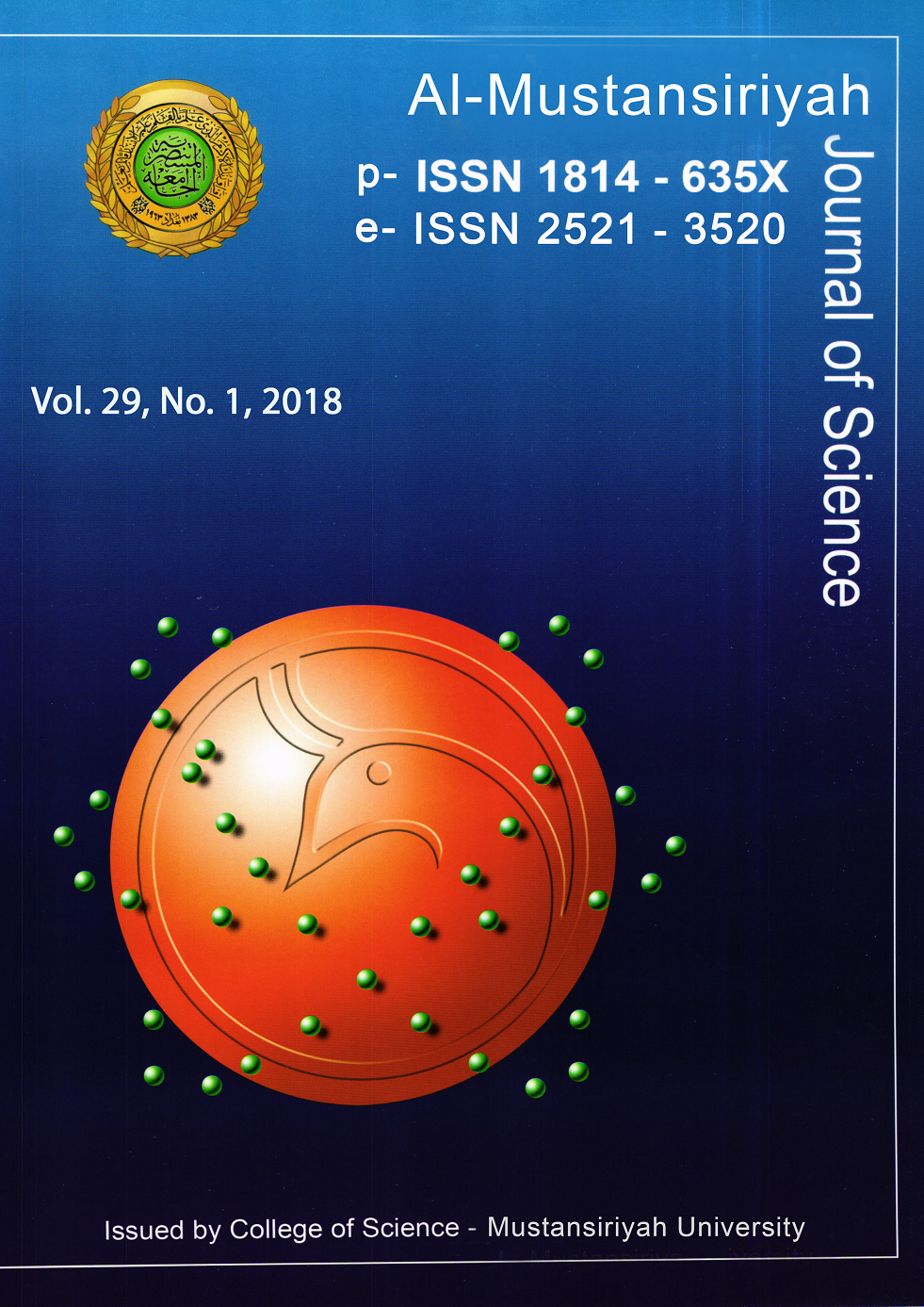Effect of some Ricinus communis secondary metabolites on Phytophthora infestans and Fusarium solani
DOI:
https://doi.org/10.23851/mjs.v29i1.288Keywords:
Ricinus communis, Phytophthora infestans, Fusariumsolani, tissue cultureAbstract
This study was conducted to investigate the effect of two types of Ricinus communis plant tissue culture extract on two fungal plant pathogens Phytophthora infestans and Fusarium solani. The result showed detected several secondary metabolites component from the plant extracts like Flavonoid, Saponins, Tannins and Glycosides; and the high effect of the alcoholic extract of the plant on the fungi with 91.10% and 89.90% respectively, the percentages of inhibition are significantly increased by increasing the concentration of the extract.Downloads
References
Berbee, M. L. (2001). The phylogeny of plant and animal pathogens in the Ascomycota. Physiol. Mol. Plant Pathol. 59:165–187.
Smith, S.E. and Read, D.J., (1997) eds. Mycorrhizal symbiosis, 2nd edn. San Diego, London: Academic Press: 59–60.
Ishrak, K.Khafagi. 2007. Variation of callus induction and active metabolite accumulation in callus culture of two varieties of RicinuscommunisL. Biotechnology 6(2):193-201.
Moshkin, V.A.editor.1986. Castor Amerind, New Delhi.
Weiss, E.A.1983. Oil seed crops. Longman group Ltd.pp31-99
Kumara, K.G., Ganesan, M. and Jayabalan, N. (2008). Somatic organogenesis and plant regeneration in Ricinuscommunis L. Biol plant arum. 52:17-25.
Ogunniyi, D.S.,(2006). Castor oil: Avital industrial raw material-Biosource technology. 97:1086-1091.
Kumrun, Nahar and Rita sarahBorna. 2012. In vitro propagation from shoot tip explant of castor oil plant Ricinuscommunis L. A Bio energy plant. Canadian Journal on scientific and industrial Research, 3(5):254-255.
SALIHU Bolojiz., GANA, And rew K, APUYOR Ben Son G. 2014 Castor oil plant (Ricinuscommunis L.) Botany, Ecology and uses. International J. of science and research (IJSR).3(5):1333-1341.
Shah, A.; Naveed A., Akram, A.; Pervaiz A.; Tariq S. and Asif1, H. Pharmacological activity of Althaeaofficinalis L. J. Med. Plants Research. 2011. Vol. 5(24), pp. 5662-5666
Blumenthal M, Goldberg A, Brinckmann J. Herbal Medicine:Expanded Commission E Monographs. Austin, Am. Bot. Council, 2000. pp.244-248.
Afshari, R.T., Angoshtari, R. and kalantari, s.2011. Effect of light and different plant growth regulators on induction of callus growth in rapessedBrassicanapus L. genotypes, plant omics, J. 4(2):60-67.
Sutovska M, Nosalova G, Sutovsky J, Franova S, Prisenznakova L, Capek P.. Possible mechanisms of dose-dependent coughsuppressive effect of Althaeaofficinalisrhamnogalacturonan in guinea pigs test. system. International Journal of BiologicaMacromolecules, 2009.45: 27-32.
Murashige, T. and Skoog, F. (1962). A revised medium for rapid growth and bioassays with tobacco tissue culture. Physio. Plan. 15:473-497.
Kordestani, K. G. and Karami, O. (2008). Picloram-induced somatic embryogenesis in leaves of strawberry (Fragaria ananassa Duch.). Acta Biologica Cracoviensia Series Botanic 50:69-72.
Hage-Sleiman R, Mroueh M, DaherCR..Pharmacological evaluation of aqueous extract of Althaeaofficinalis flower grown inLebanon. Pharm Biol, 2011.49: 327-333.
Ramachandra, RS, and Ravishankar, GA. 2002. Plant cell culture chemical factories of secondary metabolites. BiotechnolAdv 20, 101-153.
Smetanska, I, 2008. Production of secondary metabolites using plant cell culture s.Adv Bio chemEngBiotechnol, 111, 187-228.
Shihata, I.M. (1951). A pharmacological study of Anagallis arvensis M.D. Vet. Thesis. Cairo University.
Harbone, J.B. (1984). Photochemical Methods. Champo and Hall. (2nd). London.
Rai, M.K., Qureshi, S. and Pandey, A.K. (1999). In vitro susceptibility of opportunistic Fusarium spp. to essential oils. J.Mycoses India., 42: 97-101.
Sheriff, N., Sudarshana, M.S., Umesha, S. and Hairipra sod, p.2006.Antimicrobial activity of Rauvolfia tetra phyla and physalis minima leaf and callus exracts. African Journal Biotechnology, 5:946-950.
Hussein, A.O., Hameed, I.H., Jasim, H., and Kareem, M.A.2015. Determination of alkaloid compound of Ricinuscommunis by using gas chromatography-mass spectroscopy (6C-MS). J. of medicinal plants Research. 9(10):pp349-359.
Smetanska, I.2008. Production of secondary metabolites using plant cell culture. AdvBiochemEngBiotechnol, 111,187-228.
Alaa, J.Taha. 2016. Effect of abiotic elicitation in some secondary compound of callus Neriumoleander.world journal of pharma sci. 4(5):288-293.
Downloads
Key Dates
Published
Issue
Section
License
(Starting May 5, 2024) Authors retain copyright and grant the journal right of first publication with the work simultaneously licensed under a Creative Commons Attribution (CC-BY) 4.0 License that allows others to share the work with an acknowledgement of the work’s authorship and initial publication in this journal.






















